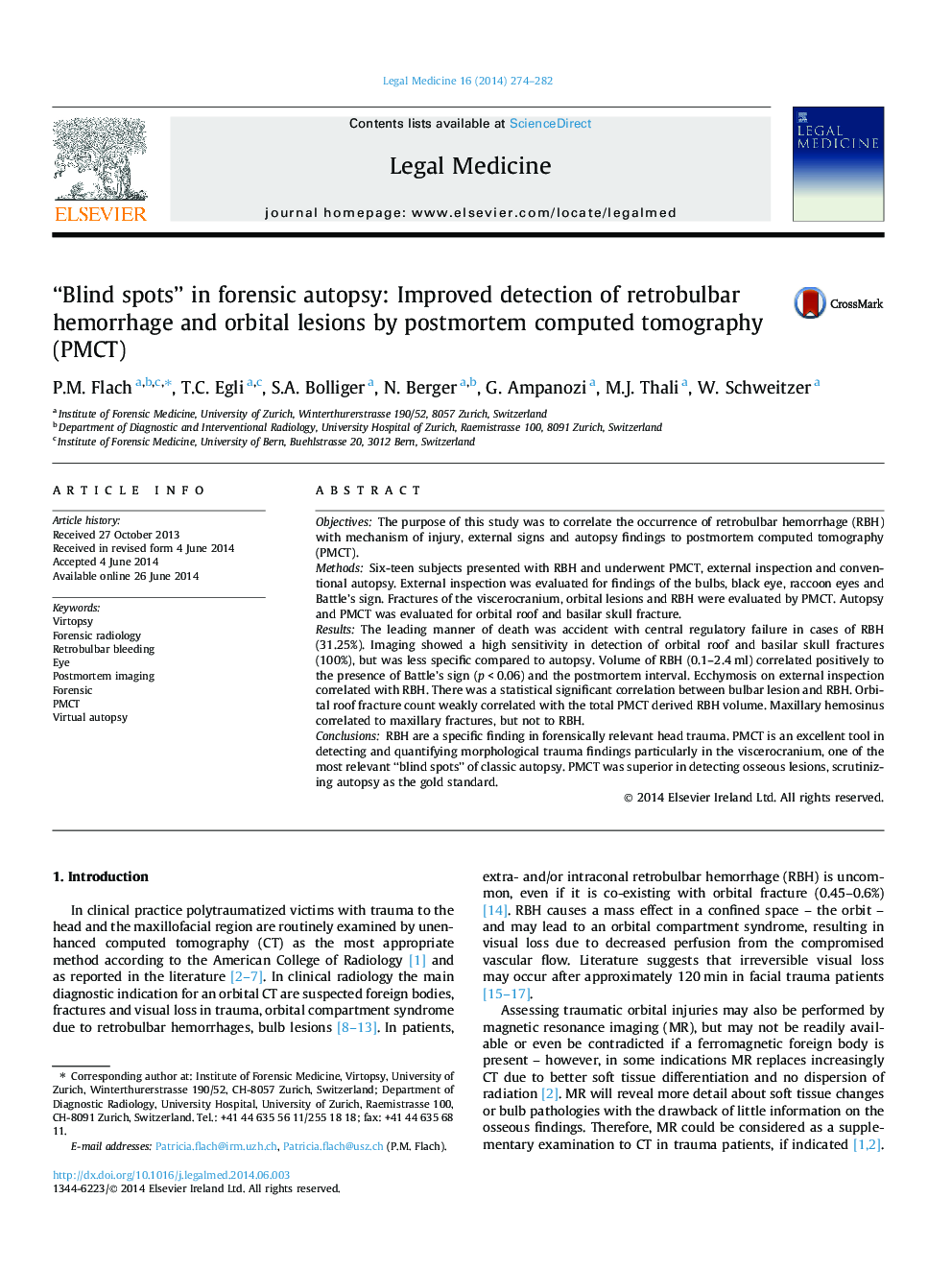| کد مقاله | کد نشریه | سال انتشار | مقاله انگلیسی | نسخه تمام متن |
|---|---|---|---|---|
| 103580 | 161388 | 2014 | 9 صفحه PDF | دانلود رایگان |

• PMCT showed a high sensitivity in detection of orbital roof and basilar skull fractures.
• Retrobulbar hemorrhages correlate positively to the presence of Battle’s sign.
• Retrobulbar hemorrhages volume is larger in deaths with a postmortem interval exceeding 48 h.
• Present bulbar lesions and RBH show a statistical significant correlation.
ObjectivesThe purpose of this study was to correlate the occurrence of retrobulbar hemorrhage (RBH) with mechanism of injury, external signs and autopsy findings to postmortem computed tomography (PMCT).MethodsSix-teen subjects presented with RBH and underwent PMCT, external inspection and conventional autopsy. External inspection was evaluated for findings of the bulbs, black eye, raccoon eyes and Battle’s sign. Fractures of the viscerocranium, orbital lesions and RBH were evaluated by PMCT. Autopsy and PMCT was evaluated for orbital roof and basilar skull fracture.ResultsThe leading manner of death was accident with central regulatory failure in cases of RBH (31.25%). Imaging showed a high sensitivity in detection of orbital roof and basilar skull fractures (100%), but was less specific compared to autopsy. Volume of RBH (0.1–2.4 ml) correlated positively to the presence of Battle’s sign (p < 0.06) and the postmortem interval. Ecchymosis on external inspection correlated with RBH. There was a statistical significant correlation between bulbar lesion and RBH. Orbital roof fracture count weakly correlated with the total PMCT derived RBH volume. Maxillary hemosinus correlated to maxillary fractures, but not to RBH.ConclusionsRBH are a specific finding in forensically relevant head trauma. PMCT is an excellent tool in detecting and quantifying morphological trauma findings particularly in the viscerocranium, one of the most relevant “blind spots” of classic autopsy. PMCT was superior in detecting osseous lesions, scrutinizing autopsy as the gold standard.
Figure optionsDownload high-quality image (102 K)Download as PowerPoint slide
Journal: Legal Medicine - Volume 16, Issue 5, September 2014, Pages 274–282